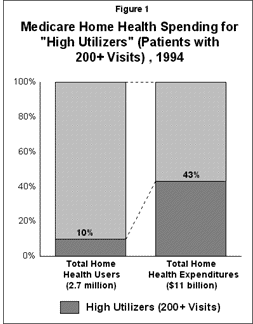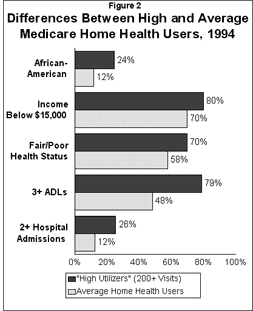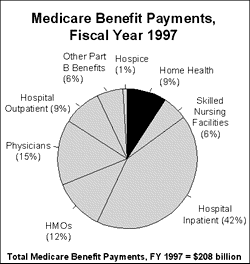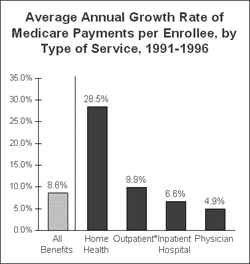State AIDS Drug Assistance Programs (ADAPs): A National Status Report on Access – Report
State AIDS Drug Assistance Programs: A National Status Report on Access
Acknowledgments
This report would not have been possible without the generous financial support of the Henry J. Kaiser Family Foundation and their continuing commitment to be at the forefront of HIV/AIDS policy issues. The authors would especially like to thank Dr. Mark D. Smith, who assisted with initiating the project and Dr. Sophia Chang and Tina Hoff of the Kaiser Family Foundation for their support, encouragement and expert advice in shaping this report.
We owe a great deal of gratitude to our project advisory committee members who reviewed and provided suggestions for this report and our national ADAP survey. They are: Moises Agosto, National Minority AIDS Council; Dr. Roxanne Cox-Iyamu, Whitman Walker Clinic; Anne Donnelly, Project Inform; Anita Eichler, Division of HIV Services (HRSA); T. Randolph Graydon, Health Care Financing Administration; Tracey Hooker, National Conference of State Legislatures; David Mulligan, Massachusetts Department of Public Health; Tracey Orloff, National Governors’ Association; Valerie Reeder, Heaven in View, Inc.; Gary Rose, formerly of AIDS Action Council and now with IssuesSphere; and Jane Silver, American Foundation for AIDS Research.
We also wish to express our gratitude to the members of the National Alliance of State and Territorial AIDS Directors (NASTAD) and the AIDS drug assistance program (ADAP) coordinators across the country for completing the national ADAP survey that was the basis for this report. We are truly grateful that, in the midst of a time of crisis, and often with minimal or non-existent staff support, these individuals took the time to respond to our survey and numerous follow up telephone calls.
Finally, special thanks to the state AIDS directors, ADAP program managers, state and federal officials and HIV/AIDS policy advocates who devoted additional time to review and provide feedback on the draft of this report. Their contributions, along with those of our project committee, have helped to make this summary report and its companion technical report among the most comprehensive and useful documents on the status of ADAPs ever published.
The principal authors of this report are Arnold Doyle, Richard Jefferys and Joseph Kelly.
The National ADAP Monitoring Project
In an effort to monitor the rapidly changing fiscal and scientific environments in which state AIDS drug assistance programs (ADAPs) are operating, and the impact of these changes on the programs and the individuals that they serve, the National Alliance of State and Territorial AIDS Directors (NASTAD) was commissioned by the Henry J. Kaiser Family Foundation, Menlo Park, CA to conduct a two-year National ADAP Monitoring Project. NASTAD is uniquely qualified to monitor the situation of state ADAPs as it is an association of the individuals who direct AIDS prevention, care and treatment services at the state level. NASTAD’s co-funded partner in the project, the AIDS Treatment Data Network (ATDN), is one of the most highly respected HIV/AIDS treatment information centers in the nation; ATDN maintains an on-line information library of the most recent treatment advances in HIV/AIDS, as well as detailed information on publicly- and privately-funded sources of reimbursement for HIV/AIDS treatments, including ADAPs.
Through the National ADAP Monitoring Project, NASTAD and ATDN will produce summary and comprehensive technical annual reports on the status of state ADAPs, with follow-up reports at six-month intervals, over the next two years. This July 1997 report provides a summary of the major findings of a national ADAP survey completed in March 1997. A longer, more comprehensive technical report based on the national survey is available through NASTAD at (202) 434-8090 or the Kaiser Family Foundation (800) 656-4533. Both the summary report and the technical report are also available for downloading from the Internet at http://www.aidsnyc.org/adap/. This Internet site, developed by ATDN, also contains detailed descriptive information about every state ADAP including program eligibility, application procedures, access and drug coverage. NASTAD and ATDN can also be reached at the following addresses:
- The National Alliance of State and Territorial AIDS Directors444 North Capitol Street, NWSuite 339Washington, DC 20001(202) 434-8090(202) 434-8092 (FAX)
AIDS Treatment Data Network611 Broadway, Suite 613New York, NY 10012-2809(800) 734-7104(212) 260-8869 FAX
Executive Summary
State AIDS drug assistance programs (ADAPs) provide access for people living with HIV/AIDS to medications that treat HIV disease and prevent the onset of opportunistic infections. State ADAPs serve as a critical lifeline for many low-income individuals living with HIV/AIDS in the United States who do not have public health insurance or adequate private health insurance. These state-administered drug reimbursement programs form one link in the continuum of publicly-funded HIV care and services available to low-income individuals supported by the Ryan White CARE Act, Medicaid, Medicare, and local indigent health care programs. The critical role that ADAPs play in improving access to HIV/AIDS treatments have made these programs the subject of increasing public scrutiny and debate.
ADAPs were developed to serve those who are uninsured and those who are underinsured and lack coverage for medications. Potential clients include those individuals who may not be disabled and therefore cannot qualify for government-sponsored health insurance programs like Medicaid. Within general federal guidelines established through the CARE (Comprehensive AIDS Resources Emergency) Act, states set unique program financial and medical eligibility criteria for their ADAPs, determine the type and number of drugs covered by the program (the ADAP formulary), and establish how covered drugs will be purchased and distributed to clients. This has led to wide variability among ADAPs from state to state vis-a-vis their structures, eligibility criteria, accessibility and the type and scope of prescription drug coverage available to clients.
In March of 1997, the National Alliance of State and Territorial AIDS Directors (NASTAD) in collaboration with the AIDS Treatment Data Network (ATDN) conducted a comprehensive survey for the Kaiser Family Foundation of all 52 AIDS programs in the United States that receive funds through Title II of the Ryan White CARE Act. The following is a summary of the major findings of this national study:
What’s Recently Been Happening With ADAPs?
- There has been a great leap forward in HIV/AIDS treatment over the past year driven largely by the advent of combination anti-HIV regimens containing protease inhibitors. But these new drug therapies come with a high price tag. Faced with rising expenditures, a burgeoning number of clients, and finite resources, many states were forced to take drastic measures to avoid bankrupting their ADAPs. Thirty-five states reported taking at least one emergency measure in the last year in response to the crisis in ADAP funding and increased demand for combination therapies. Among these measures were:
- capping program enrollment
- restricting access to certain formulary medications
- reducing drug coverage, and
- delaying or indefinitely suspending coverage of the new drugs.
- Despite the emergency measures undertaken to prevent funding shortages, eleven states responded that they predict a shortfall in FY 1997: Alabama, Arizona, Arkansas, Colorado, Montana, New Mexico, Puerto Rico, Texas, Vermont, Washington State and West Virginia. Three other states have been forced to severely limit services in 1997 in response to increased demand and costs: Florida, Mississippi and South Dakota.
- The total national ADAP budget for FY 1997 is $385 million. The majority of funds are from federal sources, including $167 million which are specifically designated for ADAP. That amount increased by 221% over the FY 1996 budget. Other federal Ryan White CARE Act dollars also contribute to the program.
- Although 30 states have supplemented federal support for ADAPs with state spending, 22 states have not contributed to the program in FY 1997. Almost two-thirds of the total state contributions to ADAP are provided by California, Louisiana, New York, and Illinois.
- Nationally, from July to December 1996, the number of ADAP clients served increased by 23% — an average increase of approximately 1,000 utilizing clients per month. Forty-two state ADAPs reported increases in the number of clients served during the last six months of 1996. Six of those states reported an increase in utilizing clients of 50% or more: Arkansas, Connecticut, Kentucky, Maryland, Oklahoma and Utah.
- Monthly program expenditures increased 37%, from $14.9 million in July 1996 to $20.4 million in December 1996. Forty-four of the state ADAPs reported increases in their monthly expenditures during the same time period; fourteen of those states reported expenditure increases of 50% or greater. The average per client expenditure among ADAPs nationally over the last six months of 1996 was approximately $506 per month or $6072 annualized.
- ADAP budgets grew nationally by 85% from 1996 to 1997, and increased over 314% since 1995. Despite the growth in ADAP budgets, many states have been unable to meet the demand from higher numbers of clients for a greater number of drugs, especially the newer antiretroviral agents.
- In the month of December 1996, 38,500 clients were served by ADAP programs nationally, according to the most current available data. During calendar year 1996, the national estimate of the cumulative number of clients served by ADAP was 80,000. (Annual estimates are limited due to monthly reporting and variable lengths of client tenure in the program.)
How Accessible and Comprehensive Are ADAP Services?
- There is wide variation among state ADAPs in their drug coverage. Access to both antiretrovirals and drugs for AIDS-related opportunistic infections (OIs) remains uneven among state ADAPs.
- All state ADAPs except Louisiana provide coverage for basic antiretroviral treatments. (In Louisiana, a separate state program provides these drugs.)
- In 1996, thirteen states restricted access to protease inhibitors.
- In 1997, four state ADAPs do not cover protease inhibitors on their formularies and two state ADAPs cover only one protease inhibitor.
- Only five state ADAPs cover the thirteen basic drugs recommended by the Infectious Disease Society of America (IDSA) and Public Health Service (PHS) in 1995 for the prevention of opportunistic infections (OIs).
- Five state ADAPs do not cover any of the strongly recommended prophylactic drugs in the updated 1997 IDSA/PHS opportunistic infection prevention guidelines. Only two state ADAPs have the full complement of fourteen strongly recommended drugs on their current formularies.
- There is also wide variation among state ADAPs in their eligibility criteria:
- Financial eligibility cutoffs range from 100% to 400% above the federal poverty level, though the majority of ADAP clients are below 200% of poverty.
- Most states use HIV infection as the basis for medical eligibility, though twelve states also require CD4 count and/or viral load information.
Future Opportunities and Challenges
- It is very difficult to estimate the precise number of persons with HIV who may be eligible for state ADAP programs. One estimate would be a range between 140,000 and 280,000 persons with HIV nationally. This range is based on the Centers for Disease Control and Prevention’s estimated number of individuals with HIV disease in the U.S. (650,000 to 900,000 people), and the 1992 Agency for Health Care Policy and Research study estimate of persons in care with symptomatic HIV who are uninsured (21.4%). This estimate represents between a two- to four-fold increase in potential ADAP clients. It should be noted that this estimate does include persons who may not know their HIV status and/or may not be in a system of care.
- Recently released federal guidelines for HIV antiretroviral therapy recommend that patients start on a combination regimen earlier in the course of HIV disease. Although the implications of implementing these new guidelines have not been established, they will likely increase pressure on state ADAPs to expand drug coverage and keep pace with expected client growth. Unfortunately, many state ADAPs are unprepared to offer this standard of care to eligible patients who may be candidates for triple combination therapy.
- There is room for improvement for many ADAPs to squeeze additional cost containment out of existing mechanisms like federal drug discount pricing and rebates by improving drug distribution systems. The challenge will be in the effective implementation of initiatives to enhance the purchasing power of ADAPs, including pharmaceutical rebates and a prime vendor system.
- Enhancing the ADAP interface with state Medicaid programs also presents opportunities and challenges. There will likely be increased pressure to assure that ADAP represents the payer of last resort and that Medicaid programs are not inappropriately limiting prescription drug coverage. Limitations on Medicaid drug coverage applies increased pressure on financially strained ADAPs to pick up the burden of paying for drugs for underinsured Medicaid-eligible populations.
- Many states are exploring innovative strategies for broadening access to HIV/AIDS therapies such as health insurance continuity programs and purchasing insurance through state risk pools. For states such as Minnesota and Oregon, insurance purchasing and continuity programs represent the bulk of their efforts to provide access to medications for low-income people living with HIV/AIDS. These and other initiatives may narrow the gap that state ADAPs fill to provide uninterrupted medication coverage for eligible individuals with HIV/AIDS.
- Significant additional federal and state resources will be needed to enable ADAPs to maintain pace with demand to deliver the standard of care for HIV therapy. Diversity of federal, state and other resources is a likely predictor of fiscal stability for ADAPs in the future.
Background
Why Does ADAP Exist?
ADAP exists because there is a gap in access to coverage for medications for low-income people living with HIV/AIDS in the United States. ADAPs are intended to serve those who are uninsured, and those who are underinsured (lacking coverage for medications). These groups include those individuals who may not be disabled and therefore cannot qualify for government-sponsored health insurance programs like Medicaid. Since 1991, the Ryan White Comprehensive AIDS Resources Emergency (CARE) Act has provided federal funding to states, localities, and community health centers to provide services for individuals with HIV/AIDS. Specifically, the funds are targeted to those who lack access to or insurance for primary medical care, medications, early diagnosis and treatment, and supportive services. The CARE Act allocates federal Title II funding directly to states and requires them to use a portion of these funds to provide HIV therapeutics, including prophylaxis and treatment of opportunistic infections, for low-income individuals.
The need for ADAP was first identified in 1987 when Congress provided an emergency appropriation of $30 million to states to establish a reimbursement mechanism for low-income individuals with HIV/AIDS to access AZT (Retrovir) — the first anti-HIV drug approved by the Food and Drug Administration (FDA). The rationale for public funding of AIDS drug assistance for low-income individuals was rather straight-forward. AZT was not cheap and individuals living with HIV/AIDS needed access to therapies to prolong and improve the quality of their lives regardless of their ability to pay. The need continued to be apparent and has more recently been placed into sharp focus with the advent of combination antiretroviral therapies, which include protease inhibitors. But these promising treatments are out of reach for many low-income individuals who lack public or private health insurance. That is precisely the reason why ADAPs exist and why they are currently struggling to keep pace with treatment advances, increased costs and client demand.
What is ADAP?
Currently, ADAPs are authorized under Title II of the Ryan White CARE Act, funded at the federal level by the Health Resources and Services Administration (HRSA) and managed by states. It is important to recognize that ADAPs are one piece of a larger health care puzzle for people living with HIV/AIDS. In fact, many state ADAPs are structured to wrap around public health care programs — Medicaid, Medicare and local indigent care programs — to ensure some continuity of access to outpatient HIV medications. Most state ADAPs are administered by the state public health departments, however, a few programs are administered by the state Medicaid agency, regional CARE-funded consortia, or by a contracted administrative agency.
Within general guidelines established by the federal government through the CARE Act, states set unique program financial and medical eligibility criteria for their ADAPs, determine the type and number of drugs covered by the program (the ADAP formulary), and establish how covered drugs will be purchased and distributed to clients. This has led to wide variability among ADAPs vis-a-vis their structures, eligibility, accessibility and the type and scope of prescription drug coverage available to eligible clients. There are several variables in each state which have led to this reality: 1) the size and demographics of the HIV/AIDS epidemic; 2) the traditional structure of public health and indigent health care systems; 3) the availability of state resources; 4) variations in Medicaid programs — including eligibility criteria, the type and extent of pharmacy benefits, and the existence of a managed care waiver which may limit drug coverage; and 5) state insurance regulations and economies which may affect private health insurance availability.
While there were relatively few treatments available to treat HIV/AIDS until recently, state ADAPs were relatively benign — albeit important — programs within the context of health care for people living with HIV/AIDS. However, in mid-1995, ADAPs began to experience explosive growth in the number of enrolled and utilizing clients, and in monthly expenditures. This growth was due mainly to the development of new treatments, including antiretrovirals and opportunistic infection prophylaxis/treatment.
What’s Recently Been Happening With ADAPs?
The great leap forward in HIV/AIDS treatment over the past year has been driven largely by combination anti-HIV regimens containing protease inhibitors. These therapies are known as antiretrovirals and attack HIV at different points during the virus’ replication process. The first rapid period of growth in ADAPs began with the approval of 3TC (Epivir) — a reverse transcriptase inhibitor, which was marketed shortly before the first protease inhibitor, saquinavir (Invirase), was approved in late 1995. In early 1996, two additional protease inhibitors, ritonavir (Norvir) and indinavir (Crixivan), received FDA approval. The licensure of these new drugs and their reported efficacy in slowing the progression of HIV disease sparked a resurgence of interest in antiretroviral therapy.
Faced with rising expenditures, a burgeoning number of clients, and finite resources, many ADAPs were forced to take measures to avoid bankrupting their programs. Among these measures were: capping program enrollment, restricting access to certain formulary medications, reducing drug coverage, and delaying or indefinitely suspending coverage of the new drugs. Increasingly, ADAPs were only able to fill a smaller portion of the gap between private insurance and Medicaid. Especially vulnerable were lower- and moderate-incidence states (states with relatively few reported AIDS cases) that receive less federal Ryan White CARE funding and often no state support. Other “safety net” programs — including drug manufacturer-sponsored patient assistance programs — were also inadequate to the task of ensuring continuity in prescription drug coverage for lower income individuals living with HIV/AIDS.
The appropriation of $52 million in federal emergency ADAP funding in fiscal year (FY) 1996 provided some relief to the programs. Many programs, however, were forced to continue waiting lists for enrollment, reduce formularies and restrict drug coverage. Throughout 1996, three major factors would continue to influence the ability of ADAPs to provide drugs to intended client populations: the emergence of combination antiretroviral therapy as a standard of care; increasing ADAP utilization; and the financial resources of the programs.
The Emerging Standard of Care
From November 1995 through April 1996 four new antiretroviral agents were approved by the FDA for the treatment of HIV; three of these new drugs belonged to a potent new class of antiretrovirals known as protease inhibitors. In the space of six months, the arsenal of antiretroviral drugs doubled. These new agents were also found to be more effective when used in combination, specifically the simultaneous use of three antiretrovirals.
The promise of these new drugs, however, has come with a steep price. The estimated cost of triple combination therapy, including a protease inhibitor, ranges from $10,000 to $15,000 per year. In June 1997, the U.S. Department of Health and Human Services (DHHS) released draft guidelines for the use of antiretroviral agents in HIV-infected adults and adolescents developed by the Panel on Clinical Practices for Treatment of HIV Infection convened by DHHS and the Henry J. Kaiser Family Foundation. These recommendations represent the current state of knowledge regarding the best strategies for implementing antiretroviral therapy for individuals with HIV/AIDS and may drive increased attention to and demand for HIV/AIDS therapies.
State AIDS Drug Assistance Programs: A National Status Report on Access:Press Release Report Part One Part Two State Data




